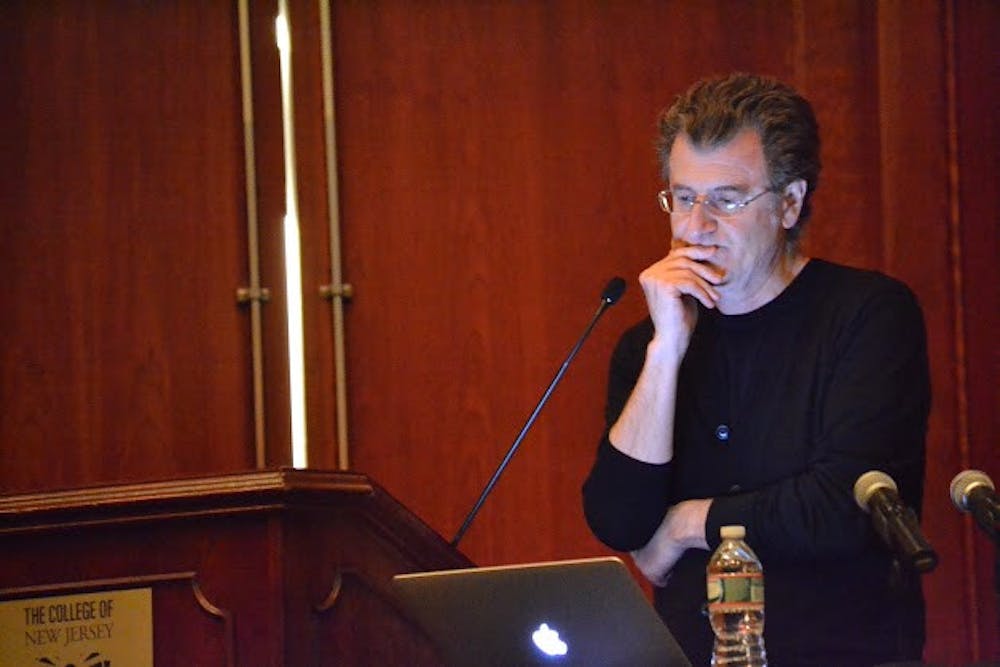By Jack Meyers
Staff Writer
With just a few powerful words and images, communities can re-imagine their struggles and recover from catastrophe, explained celebrated artist Alfredo Jaar, who spoke about his work with memorials in the Mayo Concert Hall on Wednesday, April 15.
“It’s really about the power of a single idea,” said Jaar, whose artwork is based on the importance of traveling and learning about other cultures. “Before acting in the world, I need to understand the world.”
Born in Chile and having experienced the infamous dictatorship of Augusto Pinochet, Jaar has visited and worked across the globe.

He is perhaps best known for his work in helping commemorate the deaths from state-sponsored terrorism in Latin America in the 1970s and 1980s. Most notably, Jaar created a massive lightbox memorial to the “Disappeared” — the people tortured and kidnapped under Pinochet in Santiago, Chile and a similarly evocative memorial in Buenos Aires, Argentina.
“When we feel we have the (keys), we begin to feel responsible for this place,” Jaar said about his motivation to travel and support community renewal and growth with his art.
Jaar was even recently invited to create a memorial out of found and refurbished blackboards in a city in Japan that was devastated by the 2011 tsunami. The exhibit, titled simply “We Shall Bring New Life,” showcased the countless hours the community had poured into their children’s education.
“I saw something in destruction that was the start of an idea,” Jaar said.
From the discovery of the blackboards, Jaar encouraged surviving students to contribute to this project by signing the words “We Shall Bring New Life,” which were projected, fading in and out onto the boards for a public audience.
“What you have to do is find problems and get together with friends and solve those problems,” said Dean of Arts and Communications John Laughton, praising Jaar for his transformative artwork.
At its core, the art Jaar puts forth not only has brought tremendous change to many people, but has also illustrated the importance of simplicity.
“I’m always looking for ways to articulate ideas in the most minimal way possible,” Jaar said, explaining that “poetry is very important in my work; it is fundamental.”
“I like the economy of means of poetry, when you’re capable of saying so much with so little,” he added. This minimalism is the essence of Jaar’s work, which has touched lives and helped put grief-stricken communities back on their feet.
Jaar claims his love for this kind of home-town heroism is rooted in having traveled abroad and having been well-cultured at a young age.
“I think we are the response to all the stimuli we receive,” Jaar said, encouraging the audience to take care of the cultural spaces they identify with. “The birthplace is an important stimulus, but it is not the only one.”







